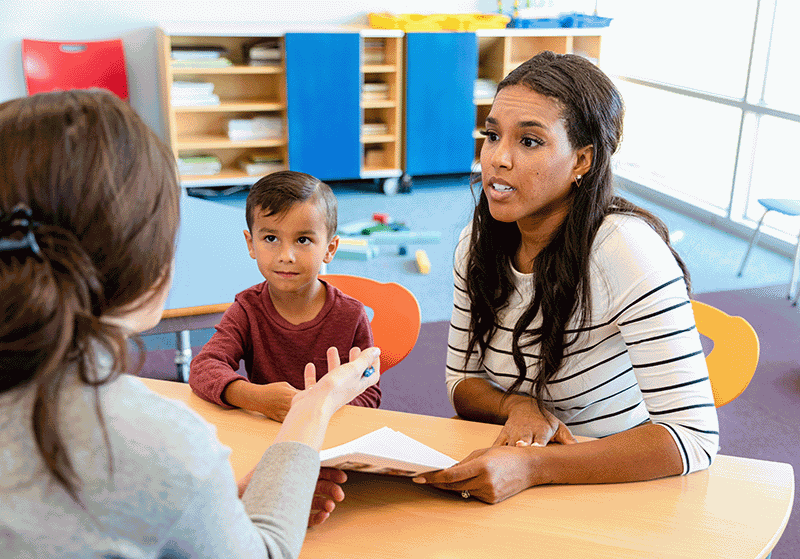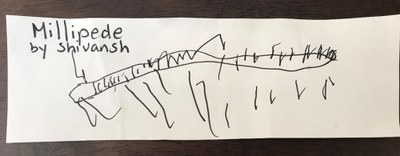Posted: January 19, 2023
Assessment data is so valuable. Most QRIS programs require educators and directors to assess children and programs. This takes a lot of time and is sometimes met with resistance and exhaustion. In a 2020 article in Exchange, Holly Delgado, an early childhood assessment specialist, urges programs to reuse assessment documentation in other ways.

parent and child having conference with child's preschool teacher
Once staff have taken the time to observe, collect, and critique data about the children and their work, teachers should use it in as many ways as possible. In the business world, they would say maximize the ROI (return on investment). Double or triple dip! Get the biggest bang for the buck.
"Repurpose observations, photos, and stories used in individual child assessments to build developmental portfolios, newsletters, and documentation panels. Through thoughtful design, teachers can provide a classroom-level depiction of the teaching and learning process. Provide access to this classroom-level data in high-traffic areas or send electronically to individual family members" (Delgado, 2020, p. 50).
Imagine you had this photo of a child's work.

What are all the possibilities for using it to the benefit of the child and the program? Text it to the family with a quick note about their child's deep noticing today. Upload it to the child's electronic portfolio to document fine motor skills, re-representation skills, and STEM and nature experiences. Once the drawing is entered in the child's digital record, compare it to drawings from six months before. What do you notice?
Share the image on Instagram, paired with a photo of the millipede and a note about the investigations happening at your program today. Hang in a hallway with a note about the insect exploration. Seek opportunities to share this work in a collection of other children's observations and expressions at a Nature Center in your community. Laminate it and put it on a stake near a flower bed, inviting other children to look for millipedes in the mulch and on plants.
What other ideas do you have?
Now that children have done some deep noticing of a millipede, it might be interesting to compare that insect to a centipede! There is so much to explore relative to the words and their number roots. How many feet do the children have? What if you counted all the feet in the room? Would you have as many as one millipede?
Don't just collect data once a quarter, share it with the family at family-teacher conferences and then bury it in a digital or paper folder. Use it for all it's worth! And it's worth so much!
Reference
Delgado, H. (2020, January/February). So Much More than "Nothing"--Translating Play-Based Learning for Our Families. Exchange, 48-50. Exchange Press.
Image provided with permission to use by Rebecca Fox Stoddard, Nurturing Roots, McLean, VA.

